Maruti's newest challenger takes on the current leader of the segment.
"Which is better? The Hyundai i20 or the Maruti Baleno?". This is a question that's been hounding us ever since Maruti launched the Baleno late last year. It's no surprise really, since the idea of a premium hatchback bearing a Maruti badge will appeal to any budget-oriented buyer.
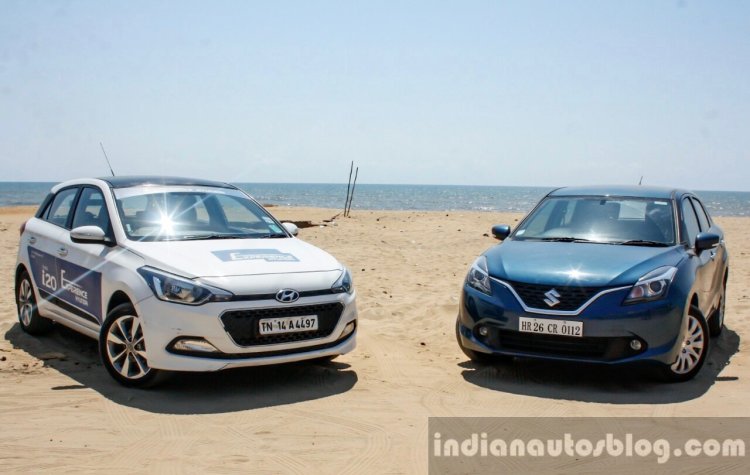
However, if you go to one of the NEXA showrooms to pre-order a Baleno today, you will be disappointed to know that there's a six month waiting period for it. Since not many people have the patience to wait that long, they start to look at alternatives. If I were one of the buyers, the first car that instantly comes to my mind is the Hyundai i20.
Launched in 2014, the 'Elite' i20 quickly became one of Hyundai's best selling products - pushing over 2 Lakh units (including Active i20) till date. For 2016, Hyundai updated the i20 with more creature comforts and standard features as a response to the Baleno's attractive list of equipment, thus making it a little bit harder for customers to pick one of the two.
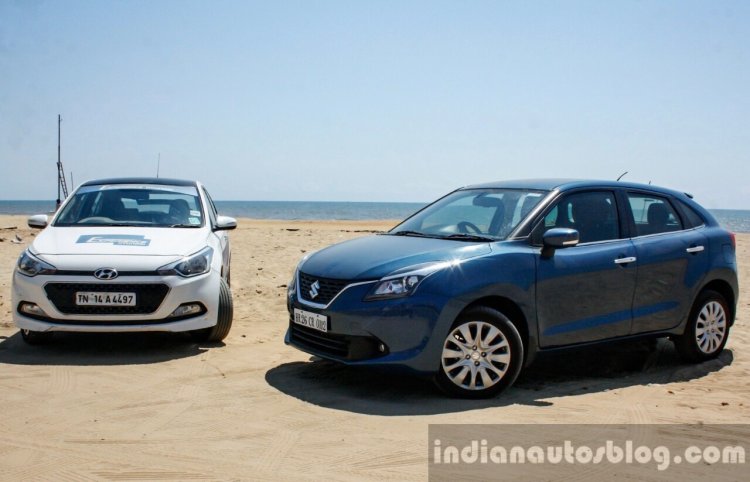
Well, I've been driving the two heavyweights back to back, and spent sleepless nights deciding on a winner. After discussing with my colleagues as well, here's what I think.
Exterior Design and Features:
What we have here are two handsome premium hatchbacks that look distinctive and contemporary when compared to their respective siblings. The Hyundai i20 set the benchmark for exterior design in the segment, featuring what could be one of the best examples of Hyundai's Fluidic Sculpture 2.0.
The sharp design lines, sleek headlamps, wide honeycomb grille, diamond-cut 16 inch alloy wheels, sloping roof with a "floating impression", and neat taillamps culminate to form this dynamic, European design that I adore.
On the other hand, the Maruti Baleno is one of the nicest looking Marutis currently sold. It adopts a cleaner exterior with curvaceous elements that highlight its new "liquid flow" design theme. While the design of the front-end is a mixed bag, the Baleno starts to look pretty when you step towards the rear, where the sloping roofline, high waistline and raked windscreen give it a potent look.
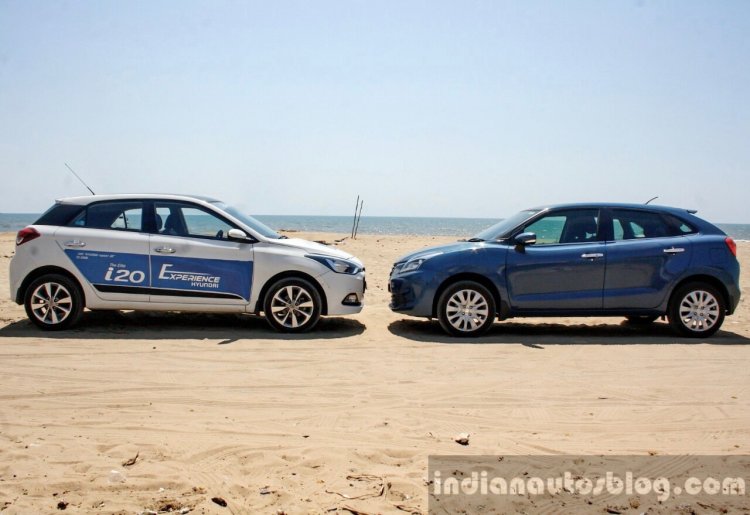
However, one glaring negative is the set of alloy wheels fitted in the top-end grade. Although the wheels fill up the arches perfectly, the alloy's design resembles a run-of-the-mill wheel cover from a distance. We wish Maruti would’ve fitted the multi-spoke 16 inch rims (seen here) from the model exported to Japan.
After staring at the two hatchbacks for hours, we reckon that the Hyundai Elite i20 still retains that benchmark in its segment. Don't get me wrong; the Maruti Baleno is a looker itself as its simple design and sculpted curves will appeal to some. It's just that the i20 has a better presence on the road and looks more spirited.
Interior Design and Build Quality:
The Baleno welcomes you to a user-friendly cabin that is very simple and easy to get acquainted with, even if you're new to the Maruti brand. It breaks the norms with an all black interior trimmed with silver and small helpings of chrome accents, and represents a good departure from the beige-black interior that is generally a popular choice.

What bogs down the experience, however, is the bland build quality. There are a few places where Maruti has improved the plastic quality, but in an overall perspective, it doesn't feel as premium as the Hyundai i20.
The Baleno starts to redeem itself when it comes to seats and occupant space. The front seats feel adequately supportive and comfortable, and there’s generous space for a tall driver like me. Both rear passengers have decent legroom, even if the front seats are set for a tall person. However, the headroom is only satisfactory due the sloping roofline, while the seats themselves could’ve offered better thigh support.
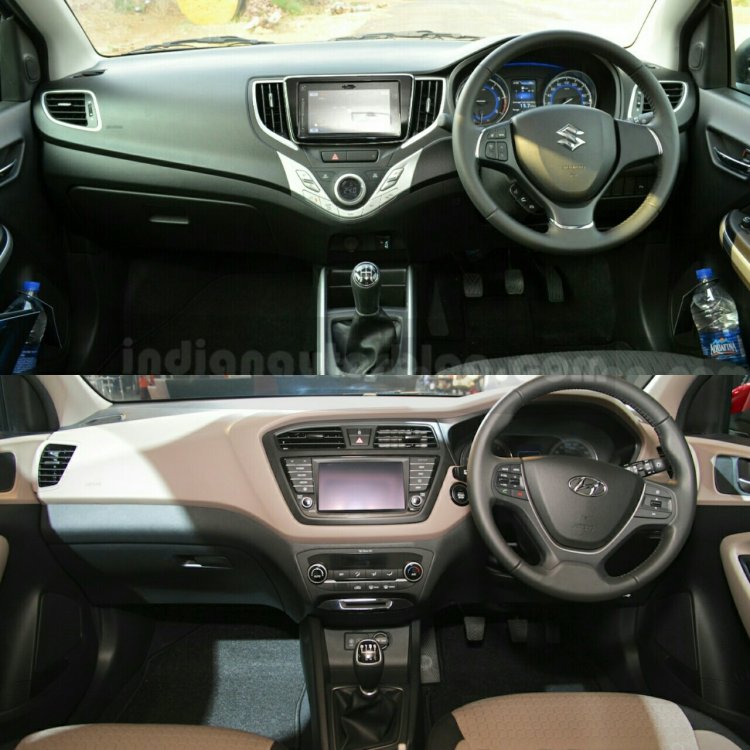
Jump in to the Elite i20, and the differences are contrasting. The interior has a beige and black color combination with silver and metal embellishments across the cabin. The center console is angled for a driver-focused approach, and the leather-wrapped steering feels great to hold with good thumb resting points. The Elite i20’s build quality is still the benchmark; everything feels solidly put, nicer to touch and exudes a premium quality that is appealing.
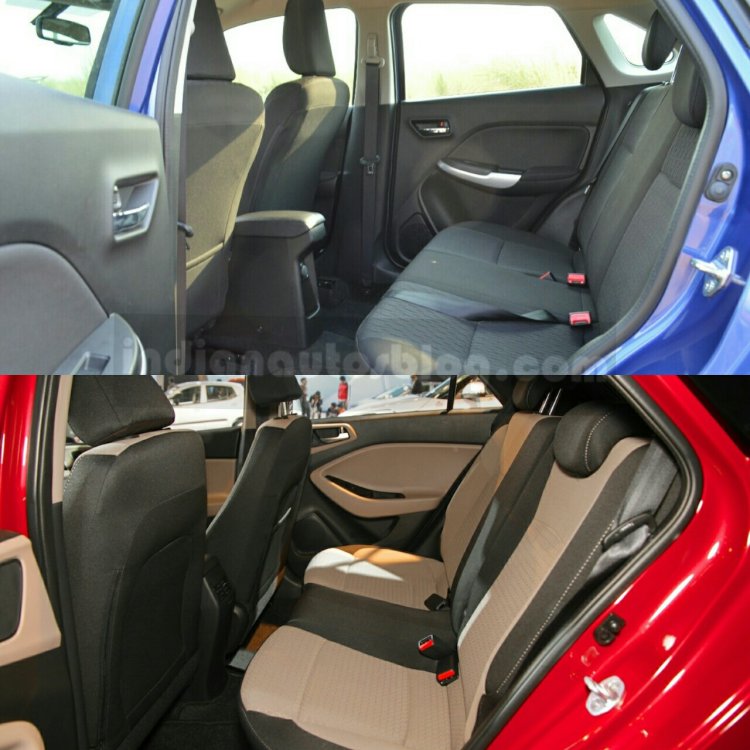
The front seats are not as comfy as the Baleno’s, but are suitable for a long distance trip. With seats adjusted for a tall person, rear occupants have similar headroom, although legroom is not as spacious as the Baleno. Hyundai has compensated by fitting a dedicated HVAC vent that is not offered in any of its rivals so far. It doesn’t get separate climate controls, but the single zone HVAC system is powerful enough to keep rear occupants cool in hot summers.
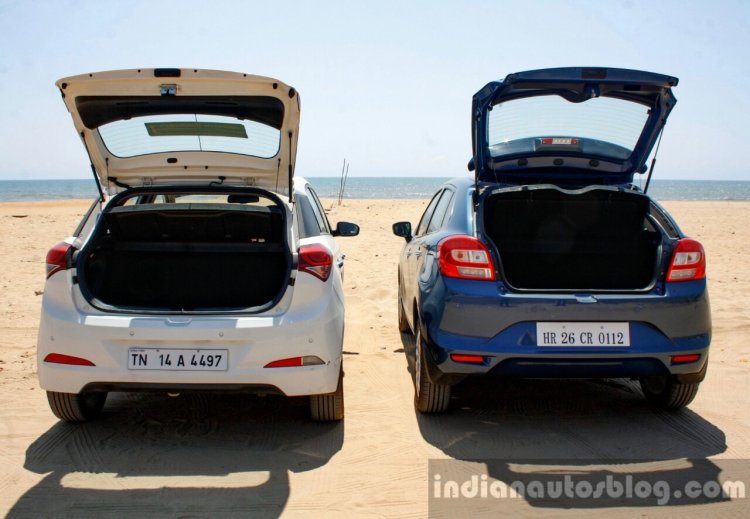
As for boot volume, the Baleno and Hyundai i20 have 339 liters and 285 liters of space respectively. Although the Baleno has a spacious boot, the higher and narrower loading lip makes it slightly harder to stow heavy baggage, as compared to the i20. Both vehicles have 60:40 split seats for more storage capacity.
Features:
In this category, the Maruti Baleno trumps the Hyundai i20. And here's why.
Firstly, the top-end Alpha grade that we were testing is less expensive than the Hyundai i20 Asta(O). It comes equipped with Maruti's Smartplay infotainment system that comprises of a responsive touchscreen running an intuitive software with Apple CarPlay support, which would appeal to Apple iPhone users.
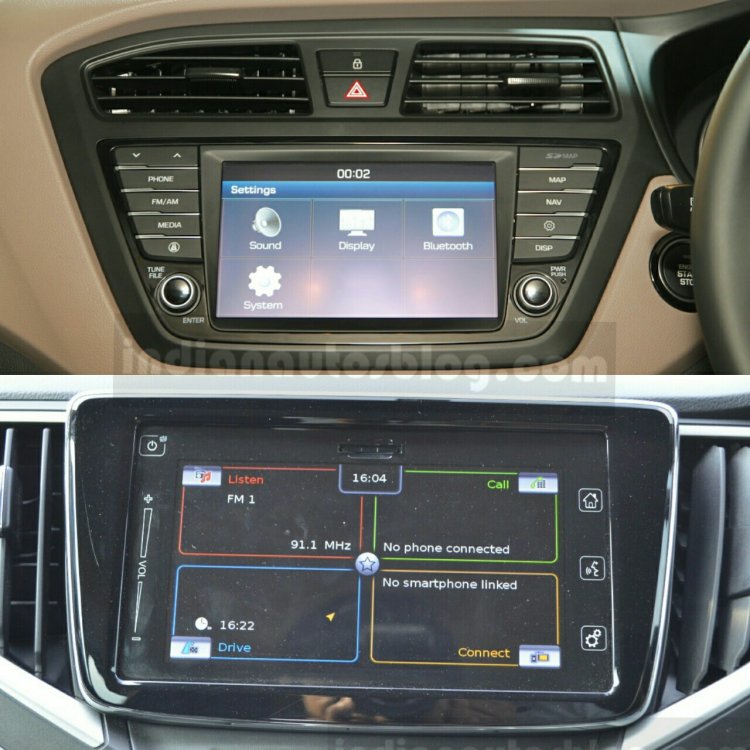
The instrument cluster is well laid out and has a color display that offers a wealth of information, including a cool power/torque delivery visual. The Baleno is the only premium hatchback to offer HID headlamps, which has better beam range than the i20's regular projector units at night. Another small-yet-passable niggle is that the Baleno is equipped with a keyless entry sensor on both front passenger and driver’s sides, whereas the Hyundai i20 has only one for the driver's door.
One of the most talked about selling points of the Baleno is its safety package. To everyone's surprise, Maruti made dual airbags and ABS as standard in all variants of the Baleno at launch, whilst keeping the price competitive. In response, Hyundai did update the i20 to feature dual airbags as standard from base models, but ABS is only available from Sportz and above.
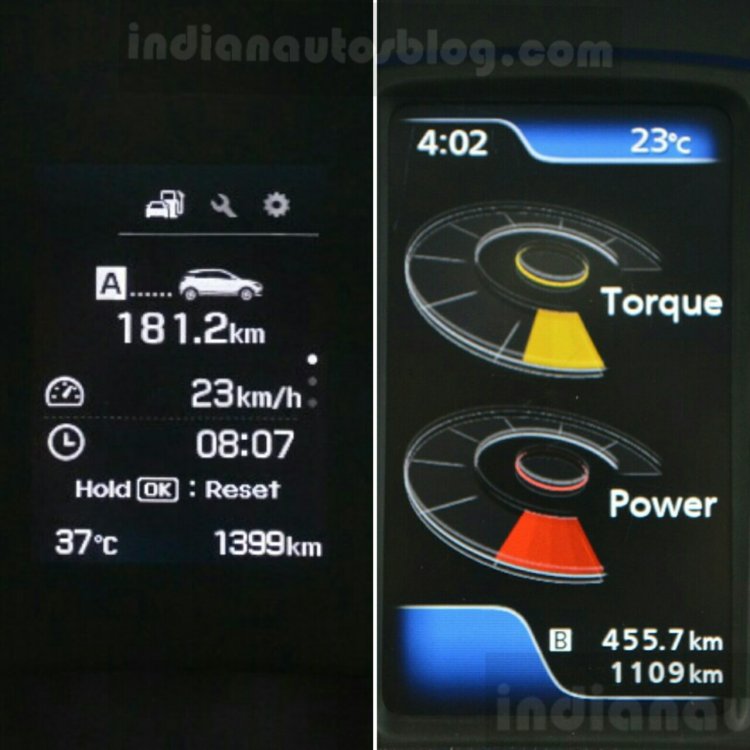
After the update, the Hyundai i20's equipment list almost matches that of the Baleno. However, the i20 is not offered with an auto dimming IRVM anymore (on the top-end variant), still lacks an auto-door lock function, and features an outdated multi-information display with no fuel consumption readouts.
Engine and Gearbox:
For this comparison review, we sourced the petrol variants of the Maruti Baleno and Hyundai i20, which are powered by their respective 1.2-liter four cylinder engines. The Maruti Baleno's 1.2-liter K-Series engine outputs 84.3 PS and 115 Nm of torque, while the Hyundai i20's 1.2-liter VTVT unit produces 83 PS and 114.7 Nm of torque. So, on paper, you'd expect both of them to offer similar performance figures.
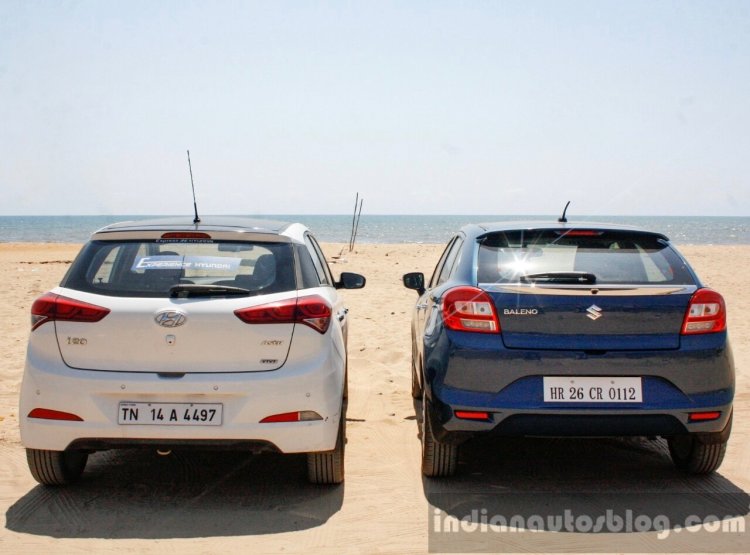
However, that's not the case here. The Maruti Baleno is livelier and quicker off the line than the Hyundai i20 because of one main difference - its kerb weight. The Maruti Baleno weighs an astonishingly low 865 kg, which is just over 150 kg lighter than the Hyundai i20. Pair that with an eager, free-revving engine as well as a slick 5-speed gearbox, and you've got a hatchback that will put a smile on an enthusiast's face.
Stepping back to the Hyundai i20, you can instantly feel that the performance is not as peppy as the Baleno. The 1.2-liter engine is slightly underpowered for the Hyundai i20, and will require the driver to shift between gears to work the engine. So it's good that Hyundai has mated a 5-speed manual gearbox that's precise and smooth to slot into a gear.
A positive about the Hyundai Elite i20 is its NVH characteristics, which will appeal to non-enthusiasts who simply want to drive in a relaxed manner in cities. Unlike the Baleno, the Hyundai Elite i20 keeps NVH levels from the engine compartment to a minimum, which complements the premium driving experience.
Ride Quality, Handling and Steering
The Maruti Baleno has a slightly firmer suspension setup that exhibits little body roll around corners. Handling characteristics are not as enthusiastic as the Maruti Swift, yet it's fairly decent for a comfortable family hatchback.
The Maruti Baleno offers a pliant ride quality, although it's not as plush as the Hyundai i20. The softer suspension setup in the Korean hatchback smothers most potholes or sizable bumps at low-medium speed. Around corners, body roll is more apparent in the Elite i20. Regardless, both are fairly comparable when being driven in a relaxed manner.
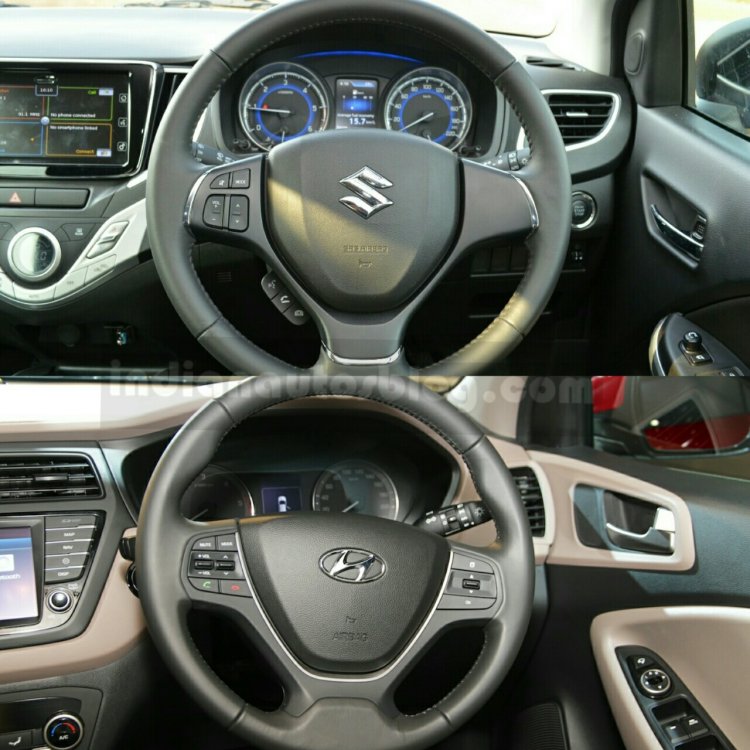
The EPAS system in the Hyundai i20 is slightly lighter than the Baleno at low speeds. It's so effortless that the steering can be easily rotated with your little finger. Either way, both steering systems are easy to maneuver the car between traffic-jammed lanes, but do not entertain an enthusiast with any feedback from the road.
Prices:
The Maruti Baleno was launched at an highly competitive price tag of INR 4.99 Lakhs for the base petrol, which was astounding for what it offered. Since then Maruti has raised the prices, although it's still cheaper than the Hyundai Elite i20 by INR 30,000 - INR 40,000 (ex-showroom Delhi).
Prices start from INR 5.15 Lakhs - INR 7.11 Lakhs for the Baleno petrol variant, while the Hyundai i20 starts from INR 5.55 Lakhs - INR 7.56 Lakhs (both ex-showroom Delhi).
Verdict:
The Maruti Baleno's petrol variant is the most fuel efficient hatchback in its segment, and would appeal to an enthusiast with its eager engine performance and nimbleness around corners. It's not only less expensive, but the top-end grade is generously equipped with a suite of creature comforts. Buyers will also appreciate the spacious cabin that's good for a family of four.
Compared to the Hyundai i20, the Maruti Baleno doesn't feel well-built or stylish, and the six month waiting period is likely to put off many new customers from placing an order.
Speaking of the Hyundai i20, it is a benchmark in the premium hatchback segment with its best-in-class exterior design and interior build quality. The i20 almost matches the Baleno's equipment feature list, but doesn't have the most spacious cabin or storage volume.
On the mechanical front, the i20's petrol engine feels slightly underpowered and the handling characteristics are not as engaging as its rivals. Regardless, it is an appealing option for people looking for a premium hatchback with limited driving requirements within cities, where performance isn't a key criteria.













